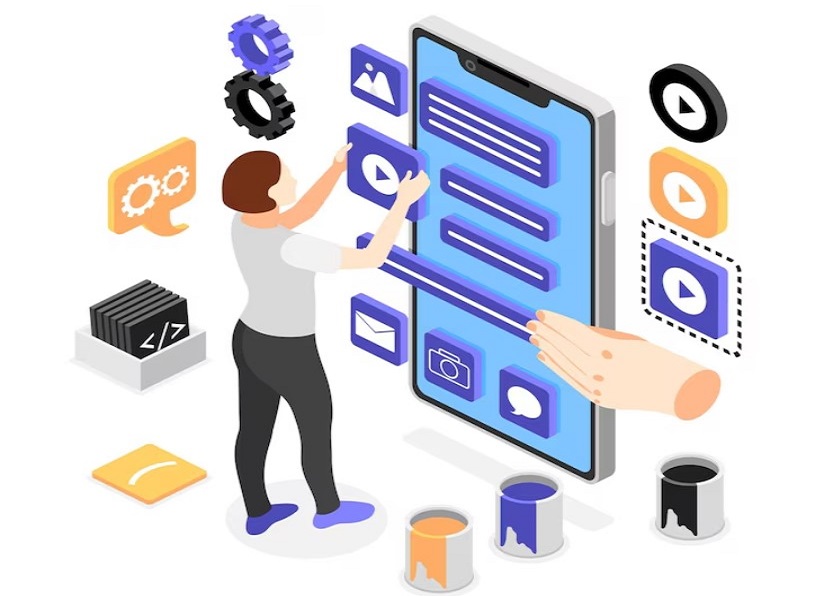Leadership News
Medium
171
Image Credit: Medium
In the world of Artificial Intelligence, Let’s be a little more Human
- In the world of artificial intelligence, we are and will be at the forefront, if we allow ourselves.
- We need to invest in the human potential and leverage AI while embracing the human side of us.
- Leadership should revolve around the uniqueness of being oneself, which is the differentiating factor of a successful leader.
- We crave for authenticity and a little randomness as humans, even in a world dominated by AI.
Read Full Article
10 Likes
Medium
117
Image Credit: Medium
Your first 90 days as a Product Owner
- Establish trust with stakeholders by scheduling 1-on-1 meetings and demonstrating your understanding and skills.
- Position yourself as an enabler, supporting the success of your development team.
- Avoid micromanagement and keep developers focused to minimize distractions.
- Audit your product backlog and prioritize the most impactful items for your first 90 days.
Read Full Article
7 Likes
Medium
438

Image Credit: Medium
The Lamborghini Aventador: A Symphony of Power and Luxury
- The Lamborghini Aventador is the successor to the legendary Lamborghini Murciélago, delivering exhilarating performance and unparalleled driving experiences.
- The Aventador's design is a masterpiece of automotive artistry, with its sharp lines and aerodynamic curves creating a striking and functional visual spectacle.
- At the heart of the Aventador is a 6.5-liter V12 engine that produces a staggering 700 horsepower, propelling the car from 0 to 60 mph in 2.9 seconds.
- The Aventador showcases advanced technology, such as a carbon fiber monocoque chassis and electronic driving aids, ensuring effective and safe use of its power.
Read Full Article
26 Likes
Leaderchat
58

Image Credit: Leaderchat
Need to Interrupt the Downward Spiral? Ask Madeleine
- The article features a conversation between Madeleine and a reader, 'Negative Spiral,' who is struggling with the impact of changes in the industries their company supports due to regulations in Washington.
- The team is in chaos, with fear of business failure looming. The situation is worsened by personal challenges faced by team members, creating a sense of impending doom.
- Madeleine acknowledges the distress and advises the leader to adjust their focus from returning to normal to adapting to a new normal amidst ongoing uncertainty.
- She emphasizes the importance of maintaining calm leadership to reassure the team and suggests listening empathetically to employees' concerns and distress.
- Encouraging the use of Employee Assistance Programs and guiding individuals to express their feelings and explore coping strategies are recommended approaches.
- Madeleine suggests transparent communication about known facts, beliefs, and uncertainties to provide a sense of stability and direction to the team.
- Redirecting focus towards controllable tasks and activities is advised to shift from negative rumination to positive action, interrupting the downward spiral of thoughts.
- The article highlights the importance of staying optimistic, focusing on achievable tasks, and supporting team members in remaining functional during challenging times.
- Madeleine emphasizes that through calm leadership and practical guidance, one can help stabilize the team and instill a sense of hope and productivity in the face of uncertainty.
- Overall, the advice aims to empower leaders to navigate turbulent times by fostering resilience, communication, and constructive action within their teams.
Read Full Article
3 Likes
Hrdive
1.9k

Image Credit: Hrdive
Most job seekers say they’re ‘uncomfortable’ with employers using AI for resume review, decision-making
- 67% of job seekers feel 'uncomfortable' with employers using AI to review resumes and make decisions.
- 90% of job seekers want companies to be upfront about using AI in recruiting and hiring.
- Job seekers prefer AI as a supportive tool, particularly in tasks like interview scheduling, candidate sourcing, and candidate screening.
- Balancing AI tools with human talent remains a challenge for most companies.
Read Full Article
13 Likes
Medium
226

Image Credit: Medium
Design Leadership as a Bridge: Uniting User Needs with Business Objectives
- In the early stages of the author's career, there was a noticeable divide between design meetings ranging from user-focused to business-focused perspectives.
- During a project at Expedia, the team faced a challenge with customer confusion on flight tiers due to non-standardized nomenclature introduced by major U.S. airlines.
- To address the issue effectively, the team sought the intersection of user needs and business objectives by conducting comprehensive research.
- By developing a customization-focused interface that emphasized tangible features over airline terminology, the team achieved significant results.
- Effective design leadership involves creating 'translation tools' to help both user-focused and business-focused teams understand each other's perspectives.
- Implementing practices such as impact assessments and 'Experience Economics' workshops helped bridge the gap between design and business constraints.
- The author emphasizes the importance of introducing diverse perspectives in design reviews and integrating key business metrics into design tools and documentation.
- Developing bilingual design leaders fluent in both design and business language is crucial for successful design leadership in the future.
- Measuring success in stereo, tracking both user-centric and business metrics, is essential for reinforcing the power of bridging user needs and business objectives.
- Organizations that master the balance between user needs and business objectives can create resilient design teams capable of delivering exceptional user experiences while driving business growth.
Read Full Article
13 Likes
Leadgrowdevelop
429

Image Credit: Leadgrowdevelop
Sustainable Office: Creating a Green and Productive Workplace
- A sustainable workplace promotes efficiency and productivity while minimizing negative environmental effects.
- Incorporating green building materials, optimizing natural lighting and ventilation, implementing energy-efficient systems, and encouraging a paperless workplace are important strategies for creating a sustainable office.
- Green building materials, such as reused metal, bamboo, and repurposed wood, can minimize environmental impact while maximizing natural light and improving air quality.
- Transitioning to a paperless office and incorporating indoor green spaces with plants and biophilic design can further enhance sustainability and employee well-being.
Read Full Article
25 Likes
Leadgrowdevelop
361

Image Credit: Leadgrowdevelop
5 Reasons Why Companies Need Stronger Financial Guarantees
- Securing large-scale contracts and partnerships is one of the significant reasons why companies need strong financial guarantees as it demonstrates financial well-being and credibility.
- Companies that lack strong financial guarantees are more vulnerable to risks in uncertain economic environments, such as market volatility, changing regulatory environments, and economic downturns.
- Financially secure companies enhance confidence with investors and lenders as it showcases the company's ability to control liabilities, bring in stable revenues, and repay debts.
- Strong financial guarantees play a crucial role in reducing legal and compliance risk, including adhering to financial regulations and statutes, preventing legal problems, and building business credibility.
Read Full Article
21 Likes
Leadgrowdevelop
366

Image Credit: Leadgrowdevelop
Content Marketing for Leaders Who Want to Inspire Change
- Practical content marketing for leaders focuses on creating meaningful connections with the audience to inspire change and share vision effectively.
- Clear and engaging writing is foundational in inspiring content, enhancing readability and audience connection.
- Leaders should simplify messages with short sentences and paragraphs to improve comprehension and engagement.
- Authentic content aligned with leadership vision builds trust and inspires audiences effectively.
- Storytelling in content marketing for leaders motivates action by creating emotional connections and providing practical solutions.
- Emotional intelligence in content resonates deeply with audiences and fosters genuine engagement and trust.
- Choosing the right content formats like blogs, videos, podcasts, and social media posts is crucial for impactful content marketing.
- Leaders should measure content effectiveness through audience engagement and feedback to adjust strategies for improvement.
- Consistency in content across all platforms reinforces core messages and builds trust with audiences.
- Effective content marketing for leaders involves connecting with audiences authentically, measuring impact, and maintaining consistency to drive lasting change.
Read Full Article
22 Likes
Leadgrowdevelop
293

Image Credit: Leadgrowdevelop
A Comprehensive Guide to Mobile App Backend Development
- A mobile application consists of a front end focusing on user interface and a backend powering program performance.
- Mobile app backend development involves architecture, logic, and data management for seamless user experience.
- Global BaaS market expected to reach US$ 27,016.6 million by 2033, with a CAGR of 24.5%.
- Key components of backend development include servers, databases, APIs, and authentication methods.
- Scalability in backend solutions is crucial to handle increasing user bases and traffic spikes effectively.
- Technological stack for backend development includes programming languages, frameworks, and cloud solutions.
- Choosing the right backend app development company is vital for custom solutions tailored to business needs.
- Challenges in mobile app backend development include security risks, integration complexities, and maintenance requirements.
- Mobile app backend development plays a crucial role in user experience through real-time features and personalized recommendations.
- Investing in backend development ensures app scalability and competitiveness in the digital landscape.
Read Full Article
17 Likes
Leadgrowdevelop
257

Image Credit: Leadgrowdevelop
Essential Nail Care Tips for Busy Professionals
- In the fast-paced professional world, maintaining well-groomed nails is essential for your professional image. Here are some practical nail care strategies for busy professionals.
- Establish a regular nail maintenance routine by trimming, shaping, and maintaining a moderate length. This prevents snags, breaks, and overgrown nails.
- Implement a 60-second daily cleaning routine using a nail brush and mild soap to reduce bacterial buildup and maintain good nail health.
- Take protective measures, such as using gloves during routine activities and choosing non-toxic nail products, to prevent damage and preserve nail integrity.
Read Full Article
15 Likes
Leadgrowdevelop
280

Image Credit: Leadgrowdevelop
Spot Fake Dell Batteries With This Ultimate 2025 Battery Replacement Guide
- Counterfeit Dell batteries are a growing concern in 2025, affecting users' safety and device performance.
- Using genuine Dell batteries is crucial for maintaining laptop performance, safety, and warranty validity.
- Fake Dell batteries can pose risks such as overheating, explosions, and voiding the warranty.
- Spotting fake Dell batteries can be done by checking prices, branding, compatibility, and packaging discrepancies.
- Advanced security features like holograms and QR codes help in authenticating Dell batteries.
- Dell offers digital verification tools and an online serial number check to verify battery authenticity.
- Purchasing Dell batteries from authorized sellers and service centers reduces the risk of counterfeit products.
- Common Dell battery issues include charging problems, rapid drain, and power instability, often caused by fake batteries.
- Recommendations include buying from trusted sources, monitoring battery health, and following Dell's diagnostic procedures.
- Ensure to replace the battery carefully and follow official guides for a smooth replacement process.
Read Full Article
16 Likes
Leadgrowdevelop
244

Image Credit: Leadgrowdevelop
Why HVAC Contractors Prefer Online Trading Platforms
- Online trading platforms have revolutionized the HVAC industry, offering contractors a centralized hub for sourcing equipment, comparing costs, and placing orders efficiently.
- HVAC experts now prefer online trading for its effectiveness, real-time order tracking, and competitive pricing advantages, enhancing operational workflows.
- The HVAC industry is transitioning to digital platforms for greater efficiency and wider access to products, with online platforms streamlining procurement processes and saving time.
- Key benefits for HVAC contractors include cost efficiency, access to a wide product catalog, 24/7 convenience for order placement, enhanced comparison tools, and valuable data insights.
- HVAC web experts help optimize item listings, offer specialized support, streamline payment processes, and manage supplier relationships effectively.
- Challenges like product authenticity and supply chain delays are being addressed through quality control measures and cybersecurity protocols on online trading platforms.
- Future trends include AI integration for smarter decisions, predictive analytics for inventory management, and personalized recommendations based on purchase history.
- Digital payment and financing options on these platforms provide secure and flexible methods for HVAC contractors to manage large purchases and streamline financial operations.
- Overall, online trading platforms have significantly impacted HVAC contractors by promoting efficiency, cost savings, and technological advancements that will shape the industry's future.
Read Full Article
14 Likes
Leadgrowdevelop
275

Image Credit: Leadgrowdevelop
The Path to Securing a Green Card: A Comprehensive Guide
- Obtaining a green card enables individuals to establish permanent residency in the United States, unlocking various rights and privileges like working and traveling freely.
- Consulting an immigration attorney can help navigate the complexities of the green card application process successfully.
- Understanding different green card petition types such as family-based, employment-based, diversity lottery, and unique immigrant cards is crucial.
- Eligibility requirements vary based on the type of green card, emphasizing the importance of meeting specific criteria for each petition.
- The application process involves filing forms, submitting documentation, attending biometric appointments, and understanding USCIS timelines.
- Challenges in the green card application process include errors in paperwork and communication breakdowns with authorities.
- Tips for a successful green card application include meticulous organization, diligent record-keeping, and proactive engagement in the process.
- Transitioning to permanent residency requires adapting to life in the U.S., fulfilling responsibilities, and potentially seeking naturalization.
- Navigating the green card journey with proper preparation and expert guidance can lead to a smoother path to permanent residency.
- Whether through family ties, employment, or lottery, securing a green card offers new opportunities and stability for individuals in the United States.
Read Full Article
16 Likes
Leadgrowdevelop
113

Image Credit: Leadgrowdevelop
Travel Insurance: A Guide For Professionals On The Move
- Travel insurance provides a way for professionals to reduce the risk of physical or monetary loss while on the move.
- Popular travel insurance coverages include trip cancellation, trip interruption, accident & sickness, and baggage and personal effects.
- Having travel protection can help minimize losses, provide post-event assistance, and offer on-demand support.
- Travel insurance can provide peace of mind for professionals facing unexpected situations while traveling.
Read Full Article
6 Likes
For uninterrupted reading, download the app